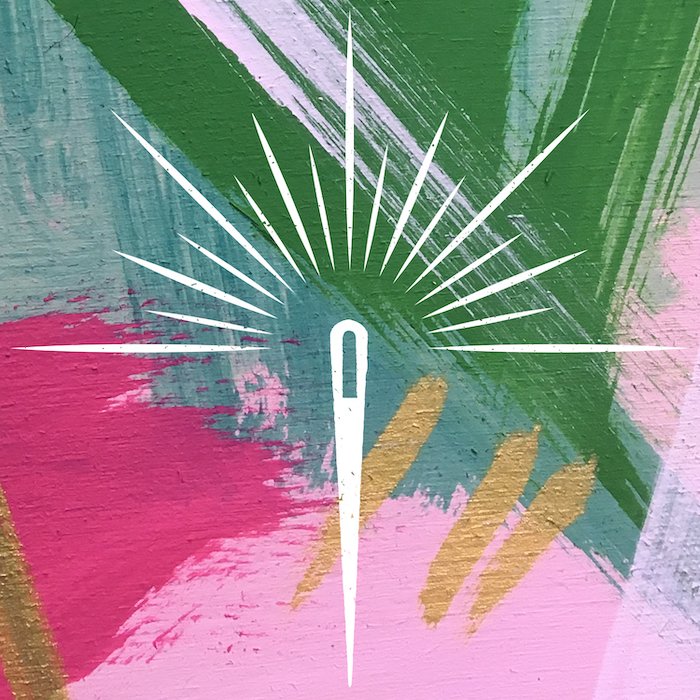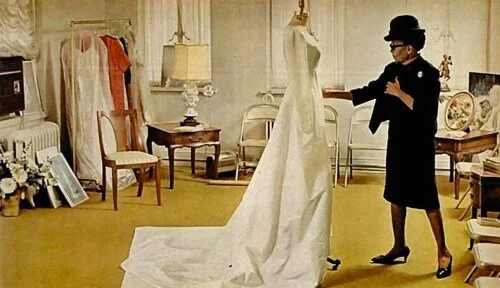Black Designers and Models who Changed the Face of the Fashion Industry
Underrepresentation of black people is an issue across all industries, and fashion is no exception. The implications of this are far-reaching; from a lack of black people occupying positions of power in the fashion world, to biased and skewed ideas of beauty. This month, SFW wants to shine a light on some of the most pioneering black models and fashion designers throughout history.
This is by no means an implication that the issue of underrepresentation is solved, but is rather an attempt to promote the history and incredible talent of so many POC in a world which is always putting white faces first. Whilst our list is only a tiny percentile of these amazing artists, here are some of the people we really admire for their work in fashion:
1) Ann Lowe
“Way ahead of her time” and New York’s “best-kept secret” are just some of the words used to describe Ann Lowe, who was famous for designing the dresses of some of North America’s crème de la crème of society; the Rockefellers, the Roosevelts and the Kennedys. In Lowe’s own words: “I love my clothes and I’m particular about who wears them… I do not cater to Mary and Sue. I sew for the families of the Social Register.” Beginning her fashion career in 1914 at age just 16 whilst working for her mother, Lowe ended up as the first black woman to own a store on Madison Avenue. Unfortunately, Lowe was taken advantage of by her clients and faced endless racial discrimination throughout her life. However, she helped pave the way for other designers of her race and remains an incredible historical figure in the world of fashion.
2) Donyale Luna
Donyale Luna is most famous as being the first woman of colour ever to appear on the cover of Vogue. In 1963 when she was 18, Luna was spotted by fashion photographer David McCabe in her Catholic school uniform and he was “compelled” to give her his number in case she was interested in becoming a model. Luna arrived on the fashion scene in the USA in 1964 when the country was rife with racism – just a few years before Martin Luther King was assassinated. Eventually, Luna made her way to Europe where she hoped to escape some the discrimination she faced in North America. It was in the UK that Luna was photographed by David Bailey for the cover of Vogue. Tragically, Luna died in 1979. Her daughter, Dream Cazzaniga, describes her as “vibrant, present and totally connected to life” - “a young African-American girl from Detroit who didn’t let others define her”.
3) Willi Smith
Willi Smith is most famous as the designer who introduced streetwear to the catwalk. Smith once commented that “Fashion is a people thing and designers should remember that. Models pose in clothes. People live in them.” Smith also hailed his race as having a huge part to play in his work: “Being black has a lot to do with my being a good designer… Most of these designers who have to run to Paris for colour and fabric combinations should go to church on Sunday in Harlem. It’s all right there.” Born in Philadelphia in 1948, Smith had his big break in the early 80s when his label Williwear incorporated elements of hip hop culture into its design. In 1983, Smith became the youngest-ever winner of American Fashion Critics’ Award for Women’s Fashion. Kim Hastreiter, a former friend, describes how Smith “was a huge hero to African American women… He represented so many dreams, their dreams for the future of their African American community.”
4) Bethann Hardison
Bethann Hardison went from being a button factory worker to an international model, and was in fact discovered by Willi Smith. Hardison is most well known for her fabulous appearance in the 1973 Battle of Versailles fashion show: a face-off between American and French designers in an effort to raise money for the restoration of the Palace of Versailles. Aside from her extraordinary creative work in fashion, Hardison has also worked – and continues to work – extremely hard to improve racial diversity in the fashion industry. In 1988, she founded the Black Girls Coalition with her best friend Iman, giving a platform for Black models to have their voices heard. She has since been employed by brands as famous as Gucci to give insight into racial consciousness. Hardison continues this inspirational work and in an interview with Zendaya earlier this year commented: “We as creators can make change, but the bigger problem is the political administration that we now sit with.”
5) Sean “P Diddy” Combs
Sean “P Diddy’ Combs used his celebrity status to change the fashion industry – and it was incredible. Whilst it was at first cause for much amusement amongst the fashion world when Combs launched his collection Sean John in 1998, the label now makes more than $400 million annually, and has been influential throughout the industry: the brand’s impact is obvious from Paris to the public’s streetwear. Combs cleverly used his celebrity status to market his designs, and his work was also the “aspirational aesthetic of a rising, multicultural generation.” Combs describes how “We wanted to give them fashion that represents them. We wanted to give them extremely multicultural and diverse fashion… We brought them fashion-tainment.” In 2001, Sean John held the first nationally televised runway show and later Combs won the CFDA’s Menswear Designer of the Year award.
6) Tracy Reese
Tracy Reese’s designs have been worn by the likes of Michelle Obama and Taylor Swift. Her work is known for its “rich, daring colours and unique prints that are crafted into joyful, feminine pieces for the modern woman.” In 1997, she launched the line which was the first step towards her rise in fame and she is now on the board of the CFDA Board of Directors. She has worked solidly through some of fashion’s rockiest years, and come out on top producing upwards of 10 collections a year. We are particularly invested in Reese’s work here at SFW because of her efforts in sustainable fashion. In 2019, Reese released her latest label, Hope for Flowers, which focuses on sustainable materials, ethical production and handwork. Reese explains how sustainability has been on her mind for almost a decade, and she could not continue contributing to the fast fashion world. Reese explains: “The more I learned about fast fashion and cheap production in general, I just knew that was the antithesis to everything I was thinking about. If you’re selling a garment for $10, let’s just do the math and understand what that means for all the people along that supply chain. It’s like slavery. I knew I didn’t want anything to do with that, so it made me really serious about what I did want.” Hope for Flowers retains Reese’s fashion stamp of large, bright prints and floaty materials, but it follows a very ethical and sustainable process of production. Reese says of the label’s name: “It speak to my hopes for the planet, but also when you think about creativity and the arts, it’s about nurturing those qualities in children and adults.” We want to shriek with pride and love at everything Reese says, but must end on this final note from the gorgeous designer: “Everyone can do a little bit, and then you can do a little bit more and a little more. People are mystified about where to begin, but there are a lot of ways to approach it.”



